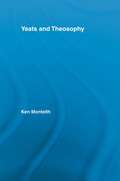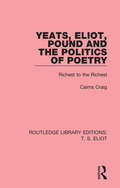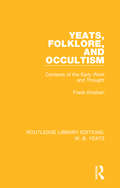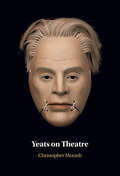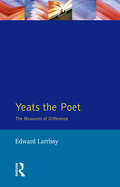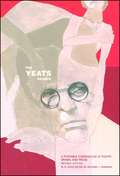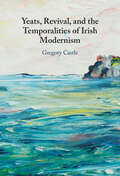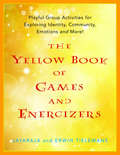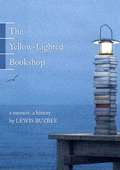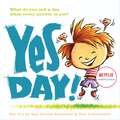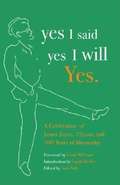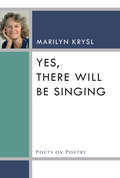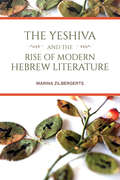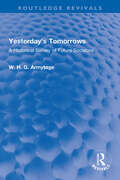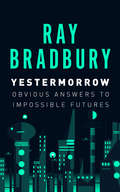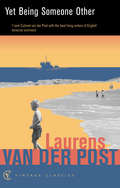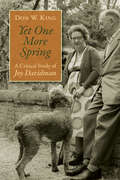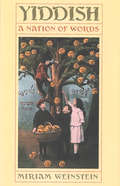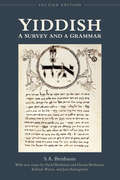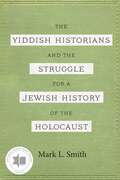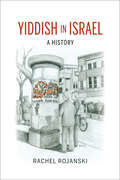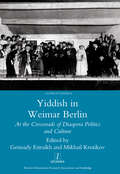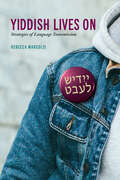- Table View
- List View
Yeats and Theosophy (Studies in Major Literary Authors)
by Ken MonteithWhen H. P. Blavatsky, the controversial head of the turn of the century movement Theosophy, defined "a true Theosophist" in her book The Key to Theosophy, she could have just as easily have been describing W. B. Yeats. Blavatsky writes, "A true Theosophist must put in practice the loftiest moral ideal, must strive to realize his unity with the whole of humanity, and work ceaselessly for others." Although Yeats joined Blavatsky's group in 1887, and subsequently left to help form The Golden Dawn in 1890, Yeats's career as poet and politician were very much in line with the methods set forth by Blavatsky's doctrine. My project explores how Yeats employs this pop-culture occultism in the creation of his own national literary aesthetic. This project not only examines the influence theosophy has on the literary work Yeats produced in the late 1880's and 1890's, but also Yeats's work as literary critic and anthology editor during that time. While Yeats uses theosophy's metaphysical world view to provide an underlying structure for some of his earliest poetry and drama, he uses theosophy's methods of investigation and argument to discover a metaphysical literary tradition which incorporates all of his own literary heroes into an Irish cultural tradition. Theosophy provides a methodology for Yeats to argue that both Shelley and Blake (for example) are part of a tradition that includes himself. Basing his argument in theosophy, Yeats can argue that the Irish people are a distinct race with a culture more "sincere" and "natural" than that of England.
Yeats, Eliot, Pound and the Politics of Poetry: Richest to the Richest (Routledge Library Editions: T. S. Eliot #2)
by Cairns Prof. CraigIt has long been recognised that there is an apparently paradoxical relationship between the revolutionary poetic style developed by Yeats, Eliot and Pound in the period during and after the First World War, and the reactionary politics with which they were associated in the 1920s and 1930s. Concentrating on their writings in the period up to the 1930s, this study, first published in 1982, helps to resolve the paradox and also provides a much needed reappraisal of the factors influencing their poetic and political development. The work of these poets has usually been seen as deriving from the tradition of continental symbolist poetics. Yeats, Eliot, Pound and the Politics of Poetry will be of interest to students of literature.
Yeats, Folklore and Occultism: Contexts of the Early Work and Thought (Routledge Library Editions: W. B. Yeats Ser.)
by Frank KinahanThis lively introduction to the poems of W. B. Yeats, first published in 1988, provides a series of intriguing new readings of his work in relation to his profound involvement with occultism and folklore. During Yeats’s formative years as an artist, two compelling movements were emerging: the revivals of interest in Irish folklore and in the mag
Yeats on Theatre
by Christopher MorashW. B. Yeats is recognised globally as one of the most significant poets of the past century. And yet, in his Nobel address, he singled out his work in the theatre as his main accomplishment. Yeats on Theatre restores Yeats not only a playwright, but as a writer and thinker who, over forty years, produced a body of theory covering all aspects of theatre, including the possibilities of performance space, the role of the audience and the nature of tragedy. When read as whole, in conjunction with his plays, letters, and extensive manuscript materials, Yeats's theatre writings emerge as a radical, cohesive, theatrical aesthetic, at odds with – and in advance of – the theatre of his time. Ultimately, the Yeats who takes shape in Yeats on Theatre is an artist who thinks through theatre, providing us with an urgently needed reassertion of the value of theatre as embodied thought.
Yeats The Poet: The Measures of Difference
by Edward LarrissyThis work addresses Yeats's "antinomies", seeing their origin and structure in his divided Anglo-Irish inheritance and examining the notion of measure. It then explores how this relates to freemasonry, Celticism and Orientalism and looks at the Blakean esoteric language of contrariety and outline which provided Yeats with the vocabulary of self-understanding.
The Yeats Reader, Revised Edition: A Portable Compendium of Poetry, Drama, and Prose
by Richard J. Finneran William Butler YeatsThroughout his long life, William Butler Yeats -- Irish writer and premier lyric poet in English in this century -- produced important works in every literary genre, works of astonishing range, energy, erudition, beauty, and skill. His early poetry is memorable and moving. His poems and plays of middle age address the human condition with language that has entered our vocabulary for cataclysmic personal and world events. The writings of his final years offer wisdom, courage, humor, and sheer technical virtuosity. T. S. Eliot pronounced Yeats "the greatest poet of our time -- certainly the greatest in this language, and so far as I am able to judge, in any language" and "one of the few whose history is the history of their own time, who are a part of the consciousness of an age which cannot be understood without them."The Yeats Reader is the most comprehensive single volume to display the full range of Yeats's talents. It presents more than one hundred and fifty of his best-known poems -- more than any other compendium -- plus eight plays, a sampling of his prose tales, and excerpts from his published autobiographical and critical writings. In addition, an appendix offers six early texts of poems that Yeats later revised. Also included are selections from the memoirs left unpublished at his death and complete introductions written for a projected collection that never came to fruition. These are supplemented by unobtrusive annotation and a chronology of the life.Yeats was a protean writer and thinker, and few writers so thoroughly reward a reader's efforts to essay the whole of their canon. This volume is an excellent place to begin that enterprise, to renew an old acquaintance with one of world literature's great voices, or to continue a lifelong interest in the phenomenon of literary genius.
Yeats, Revival, and the Temporalities of Irish Modernism
by null Gregory CastleYeats, Revivalism, and the Temporalities of Irish Modernism offers a new understanding of a writer whose revivalist commitments are often regarded in terms of nostalgic yearning and dreamy romanticism. It counters such conventions by arguing that Yeats's revivalism is an inextricable part of his modernism. Gregory Castle provides a new reading of Yeats that is informed by the latest research on the Irish Revival and guided by the phenomenological idea of worldmaking, a way of looking at literature as an aesthetic space with its own temporal and spatial norms, its own atmosphere generated by language, narrative, and literary form. The dialectical relation between the various worlds created in the work of art generate new ways of accounting for time beyond the limits of historical thinking. It is just this worldmaking power that links Yeats's revivalism to his modernism and constructs new grounds for recognizing his life and work.
The Yellow-Lighted Bookshop: A Memoir, a History
by Lewis Buzbee"I cannot remember when I read a book with such delight." —Paul Yamazaki, City Lights BookstoreNovember, a dark, rainy Tuesday, late afternoon. This is my ideal time to be in a bookstore. The shortened light of the afternoon and the idleness and hush of the hour gather everything close, the shelves and the books and the few other customers who graze head-bent in the narrow aisles. I've come to find a book.In The Yellow-Lighted Bookshop, Buzbee, a former bookseller and sales representative, celebrates the unique experience of the bookstore—the smell and touch of books, getting lost in the deep canyons of shelves, and the silent community of readers. He shares his passion for books, which began with ordering through The Weekly Reader in grade school. Interwoven throughout is afascinating historical account of the bookseller's trade—from the great Alexandria library with an estimated one million papyrus scrolls to Sylvia Beach's famous Paris bookstore, Shakespeare and Company, which led to the extraordinary effort to publish and sell James Joyce's Ulysses during the 1920s.Rich with anecdotes, The Yellow-Lighted Bookshop is the perfect choice for those who relish the enduring pleasures of spending an afternoon finding just the right book.
Yes, Cubs!
by Luisa Soto Cindy PeattieTitle contained within StartUp Phonic Core Program. Not Sold Separately
Yes Day!
by Amy Krouse RosenthalSoon to be a Netflix Film in March 2021!From the New York Times bestselling creators of I Wish You More, Amy Krouse Rosenthal and Tom Lichtenheld, a funny look at the one day of the year that can compete with Christmas for children's affection: YES DAY!No matter how silly the request, there is one day a year when kids always receive a positive response: Can I have pizza for breakfast? YES! Can we have a food fight? YES! Can I stay up really late? YES!The simple text coupled with delightful illustrations will send kids on a journey into their wildest wishes. With humor and appreciation for life's little pleasures, Yes Day! captures the excitement of being a kid.Jennifer Garner uses Yes Day! as inspiration for an annual magical day of all things YES with her children. She was a little worn out after 24 hours of pure YES in 2017, but she still praised Yes Day! as "a fantastic children's book."
Yes I said yes I will Yes
by Frank Mccourt Isaiah Sheffer Nola TullyOn the fictional morning of June 16, 1904—Bloomsday, as it has come to be known—Mr. Leopold Bloom set out from his home at 7 Eccles Street and began his day’s journey through Dublin life in the pages of James Joyce’s novel of the century,Ulysses. Commemorating the 100th anniversary of Bloomsday,Yes I Said Yes I Will Yesoffers a priceless gathering of what’s been said aboutUlyssessince the extravagant praise and withering condemnation that first greeted itupon its initial publication. From the varied appraisals of such Joyce contemporaries as William Butler Yeats (“It is an entirely new thing. . . . He has certainly surpassed in intensity any novelist of our time”) and Virginia Woolf (“Never did I read such tosh”), to excerpts from Tennessee Williams’ term paper “WhyUlyssesis Boring” and assorted wit, praise, parody, caricature, photographs, anecdotes, bon mots, and reminiscence, this treasury of Bloomsiana is a lively and winning tribute to the most famous day in literature.
Yes, There Will Be Singing
by Marilyn KryslYes, There Will Be Singing brings together Marilyn Krysl's essays on the origins of language and poetry, poetic form, the poetry of witness, and poetry's collaboration with the healing arts. Beginning with pieces on her own origins as a poet, she branches into poetry's profound spiritual and political possibilities, drawing on rich examples from poets such as Anna Akhmatova, W.S. Merwin, and Vénus Khoury-Ghata. Krysl concludes with a selection of stories of her nursing and humanitarian work, powerfully connecting poetic expression with a generous and compassionate worldview.
The Yeshiva and the Rise of Modern Hebrew Literature (Jews in Eastern Europe)
by Marina ZilbergertsThe Yeshiva and the Rise of Modern Hebrew Literature argues that the institution of the yeshiva and its ideals of Jewish textual study played a seminal role in the resurgence of Hebrew literature in modern times. Departing from the conventional interpretation of the origins of Hebrew literature in secular culture, Marina Zilbergerts points to the practices and metaphysics of Talmud study as its essential animating forces. Focusing on the early works and personal histories of founding figures of Hebrew literature, from Moshe Leib Lilienblum to Chaim Nachman Bialik, The Yeshiva and the Rise of Modern Hebrew Literature reveals the lasting engagement of modern Jewish letters with the hallowed tradition of rabbinic learning.
Yesterday's Tomorrows: A Historical Survey of Future Societies (Routledge Revivals)
by W. H. ArmytageFirst published in 1968, Yesterday’s Tomorrows elucidates on the favourite occupation of man: forecasting the future. By man’s predictions, he mirrors his own wish-fulfilments, displacements, projections, denials, evasions and withdrawals. These predications can take the form of countries of the imagination, ‘mirror worlds’ like Rabelais’ Ever-Ever lands or the Erewhon of Butler. Alternatively, they may spring from panic, reflecting fear rather than hope, often manifesting themselves, in our technological age, as reports of ‘flying saucers’ or invasions from another planet. In either form, they provide philosophers, scientists, doctors and sociologists with material for evaluating man’s future needs, offering both criticism of our present society, plans for our future, and release from tension and disequilibrium. Professor Armytage shows in this book how such ‘visions’ can, and do, refresh minds for renewed grappling with the present by arming them with ideas for man’s future needs. He indicates that, out of an apparent welter of futuristic fantasies, a constructive debate about tomorrow is emerging, providing us with operational models of what tomorrow could be. This book will hold special interest for students of philosophy and of English literature.
Yestermorrow: Obvious Answers to Impossible Futures
by Ray BradburyThe visionary science fiction author of Fahrenheit 451 shares his imaginative visions of the future in this collection of musings and memoirs. Combining a series of recollections alongside his personal contemplation about the future, protean master of storytelling Ray Bradbury outlines his thoughts on the state of the world—how the past and present are reflected in society, technology, art, literature, and popular culture—as well as the need for creative thinkers to be the architects of the future. In this extraordinary collection of essays, poetry, and philosophical reflection, readers glimpse inside the mind of one of the twentieth century&’s most celebrated and prolific authors. Bradbury reveals the creative sparks that led to some of his most well-known and enthralling stories, along with the influences on his journey to becoming a prominent figure in modern literature. Part journal, part commentary, these writings are an exploration and celebration of a dreamer whose ideas had no bounds.
Yet Being Someone Other
by Sir Laurens Van Der PostYet Being Someone Other is the most revealing book that Laurens van der Post wrote about his extraordinary and eventful life, and the most far-reaching; it is a distillation of the experiences that have moved him at the deepest level of the imagination and made him the exceptional person and writer he was.
Yet One More Spring: A Critical Study of Joy Davidman
by Don W. KingThe first comprehensive study of a gifted but largely overlooked American writer Joy Davidman (1915–1960) is probably best known today as the woman that C. S. Lewis married in the last decade of his life. But she was also an accomplished writer in her own right — an award winning poet and a prolific book, theater, and film reviewer during the late 1930s and early 1940s.Yet One More Spring is the first comprehensive critical study of Joy Davidman's poetry, nonfiction, and fiction. Don King studies her body of work — including both published and unpublished works — chronologically, tracing her development as a writer and revealing Davidman's literary influence on C. S. Lewis. King also shows how Davidman's work reflects her religious and intellectual journey from secular Judaism to atheism to Communism to Christianity. Drawing as it does on a cache of previously unknown manuscripts of Davidman's work, Yet One More Spring brings to light the work of a very gifted but largely overlooked American writer.
Yet One More Spring: A Critical Study of Joy Davidman
by Don W. KingThe first comprehensive study of a gifted but largely overlooked American writer Joy Davidman (1915–1960) is probably best known today as the woman that C. S. Lewis married in the last decade of his life. But she was also an accomplished writer in her own right — an award winning poet and a prolific book, theater, and film reviewer during the late 1930s and early 1940s.Yet One More Spring is the first comprehensive critical study of Joy Davidman's poetry, nonfiction, and fiction. Don King studies her body of work — including both published and unpublished works — chronologically, tracing her development as a writer and revealing Davidman's literary influence on C. S. Lewis. King also shows how Davidman's work reflects her religious and intellectual journey from secular Judaism to atheism to Communism to Christianity. Drawing as it does on a cache of previously unknown manuscripts of Davidman's work, Yet One More Spring brings to light the work of a very gifted but largely overlooked American writer.
Yiddish
by Miriam WeinsteinThis first-ever popular history of Yiddish is so full of life that it reads like a biography of the language.For a thousand years Yiddish was the glue that held a people together. Through the intimacies of daily use, it linked European Jews with their heroic past, their spiritual universe, their increasingly far-flung relations. In it they produced one of the world's most richly human cultures.Impoverished and disenfranchised in the eyes of the world, Yiddish-speakers created their own alternate reality - wealthy in appreciation of the varieties of human behavior, spendthrift in humor, brilliantly inventive in maintaining and strengthening community. For a people of exile, the language took the place of a nation. The written and spoken word formed the Yiddishland that never came to be. Words were army, university, city-state, territory. They were a people's home.The tale, which has never before been told, is nothing short of miraculous - the saving of a people through speech. It ranges far beyond Europe, from North America to Israel to the Russian-Chinese border, and from the end of the first millenium to the present day. This book requires no previous knowledge of Yiddish or of Jewish history - just a curious mind and an open heart.
Yiddish: A Survey and a Grammar, Second Edition
by Kalman Weiser Eleazar Birnbaum S. A. Birnbaum David Birnbaum Jean BaumgartenOne of the great Yiddish scholars of the twentieth century, S.A. Birnbaum (1891-1989) published Yiddish: A Survey and a Grammar in 1979 towards the end of a long and prolific career. Unlike other grammars and study guides for English speakers, Yiddish: A Survey and a Grammar fully describes the Southern Yiddish dialect and pronunciation used today by most native speakers, while also taking into account Northern Yiddish and Standard Yiddish, associated with secularist and academic circles. The book also includes specimens of Yiddish prose and poetic texts spanning eight centuries, sampling Yiddish literature from the medieval to modern eras across its vast European geographic expanse.The second edition of Yiddish: A Survey and a Grammar makes this classic text available again to students, teachers, and Yiddish-speakers alike. Featuring three new introductory essays by noted Yiddish scholars, a corrected version of the text, and an expanded and updated bibliography, this book is essential reading for any serious student of Yiddish and its culture.
The Yiddish Historians and the Struggle for a Jewish History of the Holocaust
by Mark L. SmithThe Yiddish Historians and the Struggle for a Jewish History of the Holocaust identifies the Yiddish historians who created a distinctively Jewish approach to writing Holocaust history in the early years following World War II. Author Mark L. Smith explains that these scholars survived the Nazi invasion of Eastern Europe, yet they have not previously been recognized as a specific group who were united by a common research agenda and a commitment to sharing their work with the worldwide community of Yiddish-speaking survivors. These Yiddish historians studied the history of the Holocaust from the perspective of its Jewish victims, focusing on the internal aspects of daily life in the ghettos and camps under Nazi occupation and stressing the importance of relying on Jewish sources and the urgency of collecting survivor testimonies, eyewitness accounts, and memoirs. With an aim to dispel the accusations of cowardice and passivity that arose against the Jewish victims of Nazism, these historians created both a vigorous defense and also a daring offense. They understood that most of those who survived did so because they had engaged in a daily struggle against conditions imposed by the Nazis to hasten their deaths. The redemption of Jewish honor through this recognition is the most innovative contribution by the Yiddish historians. It is the area in which they most influenced the research agendas of nearly all subsequent scholars while also disturbing certain accepted truths, including the beliefs that the earliest Holocaust research focused on the Nazi perpetrators, that research on the victims commenced only in the early 1960s and that Holocaust study developed as an academic discipline separate from Jewish history. Now, with writings in Yiddish journals and books in Europe, Israel, and North and South America having been recovered, listed, and given careful discussion, former ideas must yield before the Yiddish historians’ published works. The Yiddish Historians and the Struggle for a Jewish History of the Holocaust is an eye-opening monograph that will appeal to Holocaust and Jewish studies scholars, students, and general readers.
Yiddish in Israel: A History (Perspectives On Israel Studies)
by Rachel Rojanski“A pioneering study” of how two languages have coexisted in the Jewish state, with “a wealth of information” on Yiddish newspapers, theater, and more (AJS Review).Yiddish in Israel: A History challenges the commonly held view that Yiddish was suppressed or even banned by Israeli authorities for ideological reasons, offering instead a radical new interpretation of the interaction between Yiddish and Israeli Hebrew cultures. Rachel Rojanski tells the compelling unknown story of how Yiddish, the most widely used Jewish language in the pre-Holocaust world, fared in Zionist Israel, the land of Hebrew.Following Yiddish in Israel from the proclamation of the State until today, Rojanski reveals that although Israeli leadership made promoting Hebrew a high priority, it did not have a definite policy on Yiddish. The language’s varying fortune through the years was shaped by social and political developments, as well as the cultural atmosphere in Israel. Public perception of the language and its culture, the rise of identity politics, and political and financial interests all played a part.Using a wide range of archival sources, newspapers, and Yiddish literature, Rojanski follows the Israeli Yiddish scene through the history of the Yiddish press, Yiddish theater, early Israeli Yiddish literature, and high Yiddish culture. With compassion, she explores the tensions during Israel’s early years between Yiddish writers and activists and Israel’s leaders, most of whom were themselves Eastern European Jews balancing their love of Yiddish with their desire to promote Hebrew. Finally Rojanski follows Yiddish into the twenty-first century, telling the story of the revived interest in Yiddish among Israeli-born children of Holocaust survivors as they return to the language of their parents.
Yiddish in Weimar Berlin: At the Crossroads of Diaspora Politics and Culture
by Gennady Estraikh"Berlin emerged from the First World War as a multicultural European capital of immigration from the former Russian Empire, and while many Russian emigres moved to France and other countries in the 1920s, a thriving east European Jewish community remained. Yiddish-speaking intellectuals and activists participated vigorously in German cultural and political debate. Multilingual Jewish journalists, writers, actors and artists, invigorated by the creative atmosphere of the city, formed an environment which facilitated exchange between the main centres of Yiddish culture: eastern Europe, North America and Soviet Russia. All this came to an end with the Nazi rise to power in 1933, but Berlin remained a vital presence in Jewish cultural memory, as is testified by the works of Sholem Asch, Israel Joshua Singer, Zalman Shneour, Moyshe Kulbak, Uri Zvi Grinberg and Meir Wiener. This volume includes contributions by an international team of leading scholars dealing with various aspects of history, arts and literature, which tell the dramatic story of Yiddish cultural life in Weimar Berlin as a case study in the modern European culture."
Yiddish Lives On: Strategies of Language Transmission
by Rebecca MargolisThe language of a thousand years of European Jewish civilization that was decimated in the Nazi Holocaust, Yiddish has emerged as a vehicle for young people to engage with their heritage and identity. Although widely considered an endangered language, Yiddish has evolved as a site for creative renewal in the Jewish world and beyond in addition to being used daily within Hasidic communities. Yiddish Lives On explores the continuity of the language in the hands of a diverse group of native, heritage, and new speakers. The book tells stories of communities in Canada and abroad that have resisted the decline of Yiddish over a period of seventy years, spotlighting strategies that facilitate continuity through family transmission, theatre, activism, publishing, song, cinema, and other new media. Rebecca Margolis uses a multidisciplinary approach that draws on methodologies from history, sociolinguistics, ethnography, digital humanities, and screen studies to examine the ways in which engagement with Yiddish has evolved across multiple planes.Investigating the products of an abiding dedication to cultural continuity among successive generations, Yiddish Lives On offers innovative approaches to the preservation, promotion, and revitalization of minority, heritage, and lesser-taught languages.
